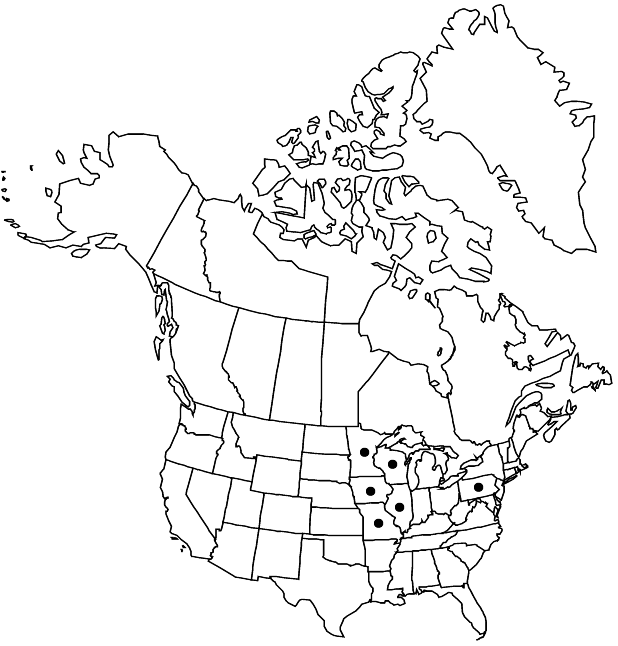Difference between revisions of "Dodecatheon amethystinum"
Rhodora 33: 224. 1931 ,.
FNA>Volume Importer |
imported>Volume Importer |
||
| Line 7: | Line 7: | ||
}} | }} | ||
|common_names=Jeweled shootingstar | |common_names=Jeweled shootingstar | ||
| + | |special_status={{Treatment/ID/Special_status | ||
| + | |code=E | ||
| + | |label=Endemic | ||
| + | }} | ||
|basionyms={{Treatment/ID/Basionym | |basionyms={{Treatment/ID/Basionym | ||
|name=Dodecatheon meadia var. amethystinum | |name=Dodecatheon meadia var. amethystinum | ||
| Line 55: | Line 59: | ||
|publication title=Rhodora | |publication title=Rhodora | ||
|publication year= | |publication year= | ||
| − | |special status= | + | |special status=Endemic |
| − | |source xml=https:// | + | |source xml=https://bibilujan@bitbucket.org/aafc-mbb/fna-data-curation.git/src/bb6b7e3a7de7d3b7888a1ad48c7fd8f5c722d8d6/coarse_grained_fna_xml/V8/V8_576.xml |
|genus=Dodecatheon | |genus=Dodecatheon | ||
|species=Dodecatheon amethystinum | |species=Dodecatheon amethystinum | ||
Revision as of 00:12, 28 May 2020
Plants 10–50 cm; scape glabrous. Caudices not obvious at anthesis; roots white; bulblets absent. Leaves 4–25 × 1–8 cm; petiole often winged; blade oblanceolate to oblong, base decurrent onto stem, often gradually tapering to petiole, margins entire, surfaces glabrous. Inflorescences 1–10(–24)-flowered; bracts narrowly or broadly lanceolate, 2–10 mm, glabrous. Pedicels 1–5 cm, glandular at proximal 1 or 2 nodes, glabrous distally. Flowers: calyx light green to green, 3–8(–10) mm, glabrous, tube 3–5 mm, lobes 5, (1–)3–7 mm; corolla tube usually maroon with maroon, thin, wavy ring, lobes 5, pink to purplish, rarely white, 8–20 mm; filaments connate, tube maroon, 0.5–2(–2.5) × 2–3.5 mm; anthers (3.5–)5–7.5(–8.5) mm; pollen sacs reddish to maroon, rarely pale, connective maroon, smooth; stigma not enlarged compared to style. Capsules light brown to reddish brown or yellowish, valvate, cylindric-ovoid, 7–16 × 3–5 mm, glabrous; walls thin, pliable. Seeds without membrane along edges.
Phenology: Flowering late spring–early summer.
Habitat: Moist slopes and limestone cliffs mainly in hardwood woodlands
Elevation: 70-300 m
Distribution

Ill., Iowa, Minn., Mo., Pa., Wis.
Discussion
Dodecatheon amethystinum is found mainly on, and at the bases of, limestone cliffs in hardwood forests from southwestern Wisconsin and adjacent southeastern Minnesota to northeastern Iowa, western Illinois, and eastern Missouri. It is disjunct to the eastern Appalachian Mountains of southeastern Pennsylvania; reports from northern West Virginia are based on specimens of D. meadia. Vegetatively, D. amethystinum is allied to D. meadia although its thin-walled (rather than thick and firm) fruit is like that of D. pulchellum. The only truly distinguishing feature between it and D. meadia is the fully mature capsules (L. H. Klotz and C. Loeffler 2007). In D. amethystinum, length of the light to reddish brown or yellowish capsule often is more than three times the diameter. The length of the dark reddish brown capsule of D. meadia is less than three times the diameter. As noted by H. H. Iltis and W. M. Shaughnessy (1960), D. amethystinum tends to grow on moist cliff faces and bluffs; D. meadia tends to occur on drier sites in prairie settings and in deciduous woodlands. Dodecatheon meadia is sometimes found in moist areas, and even on cliff faces; these sites are still comparatively drier. According to A. F. Cholewa, some populations in southern Minnesota that she considers to be D. amethystinum have leaves that are relatively broad and tend not to taper gradually to the petiole. In that light, continued recognition of D. amethystinum at the species level becomes dubious.
Selected References
None.